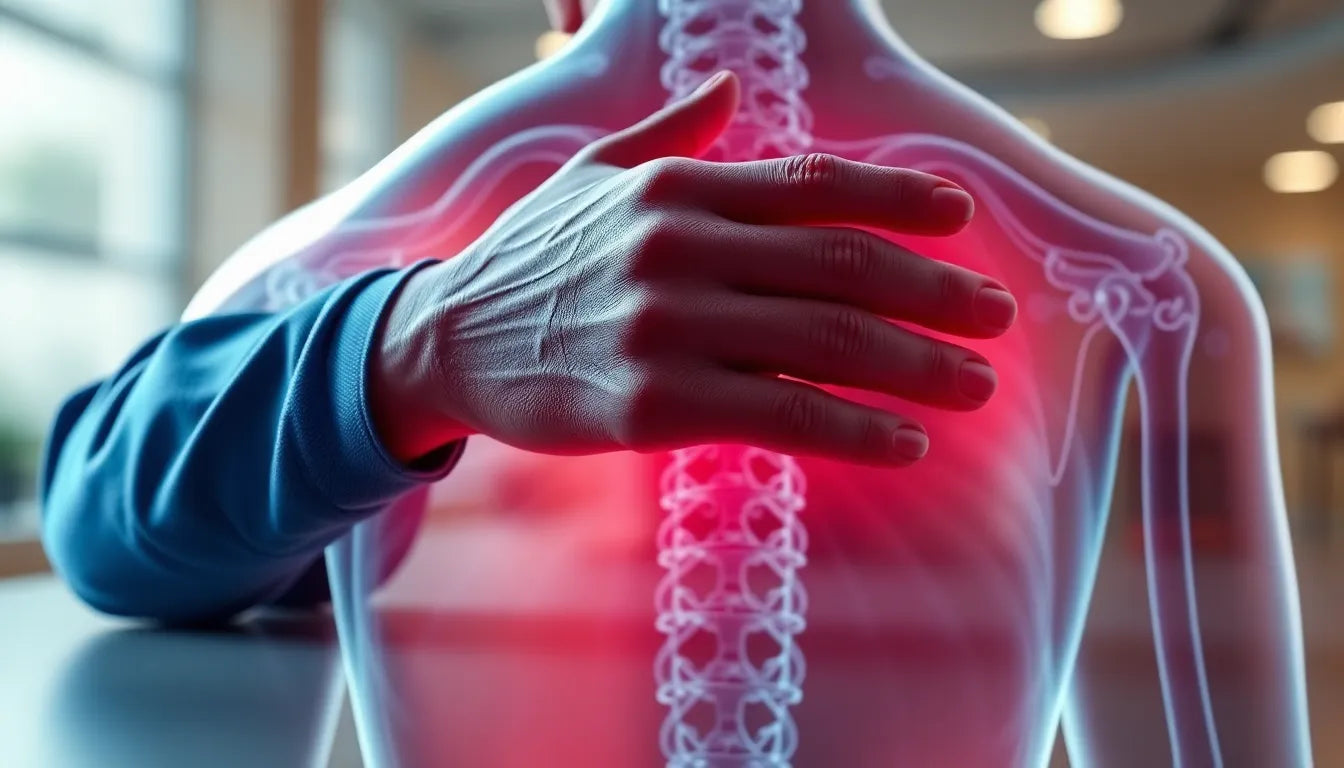Spondylosis with radiculopathy is a condition that affects many individuals, causing significant discomfort and disruption to daily life. Spondylosis refers to the degenerative changes in the spine, which can lead to cervical radiculopathy—a condition where nerve roots become compressed. This compression often results in pain, numbness, or weakness radiating from the neck into the shoulders and arms. Understanding these conditions is crucial, especially when conservative treatments fail to alleviate symptoms, leaving surgery as a viable option.
understanding spondylosis and radiculopathy
As we age, our spinal disks naturally undergo wear and tear, leading to spondylosis. This degeneration can result in the narrowing of the spinal canal or the formation of bone spurs, both of which may compress nearby nerves. When these nerves are affected, it leads to cervical radiculopathy, characterized by sharp pain, tingling, or weakness in the arms. Addressing these conditions is essential, as prolonged nerve compression can lead to permanent damage.
Conservative treatments, such as physical therapy, pain management, and lifestyle modifications, are often the first line of defense. However, when these methods do not provide sufficient relief, surgical intervention may be considered. Surgery aims to address the root cause of the nerve compression, offering a potential pathway to relief and improved quality of life.
the role of surgery
Surgical intervention for spondylosis with radiculopathy primarily focuses on relieving pressure on the affected nerves. The goals of surgery are to alleviate pain, restore mobility, and improve overall function. With advancements in medical technology and surgical techniques, there is an increasing interest in surgical solutions for this condition.
Modern surgical procedures are designed to minimize recovery time while maximizing outcomes. By addressing the structural issues within the spine, surgery can offer significant relief from symptoms and help patients regain their daily activities. As we delve deeper into the surgical options available, it becomes clear that for many, surgery represents a promising step towards a pain-free life.
In conclusion, while spondylosis with radiculopathy can be debilitating, understanding the condition and considering all treatment options, including surgery, is vital. As we explore the specifics of surgical procedures in the following sections, it becomes evident that surgery can play a critical role in managing this condition effectively.
surgical procedures for cervical radiculopathy
When conservative treatments for spondylosis with radiculopathy fall short, surgical intervention becomes a viable option. Among the most common procedures is the anterior cervical diskectomy and fusion (ACDF). This technique involves the removal of a herniated or degenerated disk to alleviate nerve compression. Once the problematic disk is removed, the surgeon performs a spinal fusion to maintain stability in the neck. The benefits of ACDF include significant pain relief and improved functionality. However, patients should be aware of potential risks, such as infection and reduced neck mobility due to the fusion of vertebrae.
Another advanced surgical option is artificial disk replacement. Unlike ACDF, this procedure replaces the damaged disk with an artificial one, allowing for more natural neck movement post-surgery. This approach helps preserve mobility and reduces stress on adjacent spinal levels, which can decrease the likelihood of future issues. Despite these advantages, potential complications include implant migration or wear over time, necessitating careful consideration and discussion with a healthcare provider.
For those seeking a less invasive option, posterior cervical laminoforaminotomy may be suitable. This procedure involves removing bone spurs or herniated disk material from the back of the neck to relieve nerve pressure. Benefits of this approach include a shorter recovery time and reduced risk of spinal instability. However, as with any surgery, there are risks, including potential nerve damage, which should be thoroughly discussed with a medical professional.
efficacy and risks of surgery
The efficacy of surgical treatments for spondylosis with radiculopathy varies, with many patients experiencing substantial short-term pain relief. However, the long-term benefits remain less certain, as highlighted by research from sources like PubMed Central. While surgery can significantly improve quality of life, it's crucial for patients to understand the potential complications. These can include infection, nerve damage, or the possibility of requiring additional surgeries in the future.
Given these considerations, it is essential for patients to engage in detailed discussions with their healthcare providers. Understanding both the potential benefits and risks of surgery allows individuals to make informed decisions tailored to their specific medical needs and lifestyle goals.
conservative treatment options
Before opting for surgery, patients with cervical radiculopathy are often encouraged to explore conservative treatment options. Physical therapy is a cornerstone of non-surgical management, focusing on strengthening neck muscles and improving posture to alleviate pressure on nerves. Pain management techniques, including medications or injections, can provide temporary relief from symptoms.
Activity modification is another key aspect, as patients may need to adjust their daily routines to avoid activities that exacerbate symptoms. Additionally, some individuals find relief through chiropractic care, which can offer non-invasive adjustments to improve spinal alignment and reduce nerve compression.
In conclusion, while surgery offers a path to relief for many, it is not the sole solution. Exploring all available treatment options, both surgical and non-surgical, is crucial in managing spondylosis with radiculopathy effectively. By working closely with healthcare professionals, patients can develop a comprehensive treatment plan that addresses their unique needs and enhances their quality of life.
Recovery and post-surgery considerations
Embarking on the journey of spondylosis with radiculopathy surgery is a significant step towards relief, but understanding the recovery process is equally crucial. Post-surgery, patients can expect a recovery timeline that varies based on the type of procedure and individual health factors. Generally, initial recovery may take a few weeks, with gradual improvements in pain and mobility. However, complete recovery can span several months, during which adherence to medical advice and rehabilitation protocols is vital.
Rehabilitation often includes physical therapy, which plays a pivotal role in regaining strength and flexibility. Engaging in prescribed exercises helps restore function and prevents complications. Follow-up care with healthcare providers ensures that recovery is on track and allows for the monitoring of any potential issues. Patients are encouraged to maintain open communication with their medical team to address concerns promptly and optimize recovery outcomes.
Decision-making and consultation
Choosing to undergo surgery for spondylosis with radiculopathy is a decision that should be made with careful consideration and professional guidance. Consulting with a healthcare professional is essential to evaluate the suitability of surgery based on individual cases. During consultations, patients should discuss the potential risks, benefits, and alternative treatments available. This thorough discussion aids in making an informed decision tailored to personal health needs and lifestyle goals.
Healthcare providers can offer insights into the likelihood of success and potential complications associated with each surgical option. By weighing these factors, patients can make a choice that aligns with their expectations and health objectives. It's important to remember that surgery is just one part of a comprehensive treatment plan, and exploring all available options with a trusted medical professional is key to achieving the best possible outcome.
Frequently Asked Questions
What is the success rate of spondylosis with radiculopathy surgery?
The success rate of spondylosis with radiculopathy surgery varies depending on the specific procedure and individual patient factors. However, many patients experience significant pain relief and improved function following surgery. It is important to discuss expected outcomes with your surgeon to gain a clearer understanding of what to anticipate.
How long does recovery from cervical radiculopathy surgery take?
Recovery times can range from a few weeks to several months, influenced by the type of surgery performed and the patient's overall health. Adherence to rehabilitation protocols and medical advice is crucial for a successful recovery.
Are there any long-term effects of cervical radiculopathy surgery?
While many patients benefit from lasting pain relief, some may experience ongoing symptoms or require additional surgeries. Long-term outcomes depend on various factors, including the specific surgical procedure and the patient's health status. Discussing potential long-term effects with your healthcare provider is advisable.
Can cervical radiculopathy return after surgery?
Although surgery aims to relieve symptoms, there is a possibility of recurrence, especially if underlying degenerative conditions continue to progress. Regular follow-up care and adherence to lifestyle modifications can help manage and reduce the risk of recurrence.
What are the alternatives to surgery for treating cervical radiculopathy?
Alternatives to surgery include physical therapy, medication, lifestyle modifications, and other non-invasive treatments. These approaches aim to manage symptoms and improve quality of life without surgical intervention. Consulting with a healthcare provider can help determine the most appropriate treatment plan for your condition.


















